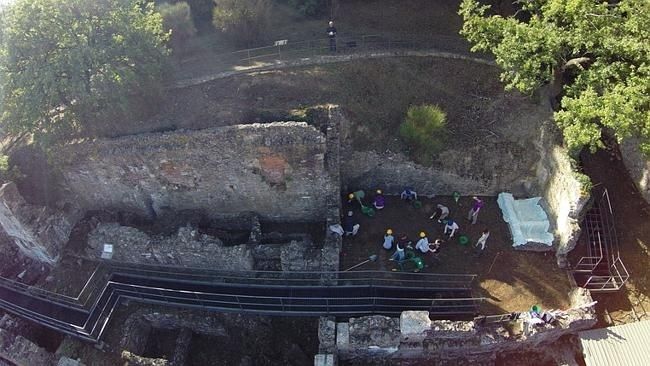|
|
Post by UKarchaeology on Nov 23, 2015 13:51:42 GMT
 Italian archaeologists have unearthed the remains of a Medieval teenage girl who was burnt and thrown carelessly in a pit, her grave covered with heavy stone slabs. Italian archaeologists have unearthed the remains of a Medieval teenage girl who was burnt and thrown carelessly in a pit, her grave covered with heavy stone slabs.Her burial shows she was seen as a danger even when dead, according to the archaeologists. The skeleton was discovered at the complex of San Calocero in Albenga on the Ligurian Riviera, by a team led by scientific director Philippe Pergola, professor of topography of the Orbis Christianus Antiquus at the Pontifical Institute of Archaeology at the Vatican. At the same location, in September 2014, the team unearthed the remains of another “witch girl,” a 13-year-old female who was buried face-down. Like other deviant burials, in which the dead were buried with a brick in the mouth, nailed or staked to the ground, or even decapitated and dismembered, both the face-down burial and the stone-covered tomb aimed at preventing the dead girls from rising from the grave. Further analysis determined the “witch girl” who was buried face-down just suffered from scurvy, a disorder caused by an insufficient intake of vitamin C. Full story: news.discovery.com/history/archaeology/skeleton-of-burnt-witch-girl-found-in-italy-151118.htm |
|
|
|
Post by UKarchaeology on Nov 24, 2015 0:41:13 GMT
Another article;  Medieval monasery ... a drones-eye vew of excavation work at San Calocero.Picture: StefanSHE was only 15. So why was she starved, bound by the elbows, burnt — and then thrown into a pit under a heavy stone slab? In medieval Italy, she was probably seen as a witch. Medieval monasery ... a drones-eye vew of excavation work at San Calocero.Picture: StefanSHE was only 15. So why was she starved, bound by the elbows, burnt — and then thrown into a pit under a heavy stone slab? In medieval Italy, she was probably seen as a witch.All the fuss was likely to guarantee she could not return from the dead to curse her killers, archaeologists believe. And she’s wasn’t the first. The remains of a 13-year-old girl were found near the same medieval monastery last year. She had been buried facedown. Italian researchers have unearthed the remains of the teenage girls at an archaeological dig at the San Calocero monastery in Albenga, near the Ligurian Riviera. The archaeologists say their burials follow the pattern often applied to ‘deviants’, such as being buried with a brick in the mouth or being staked to the ground. However, the two girls are not likely to be related. The youngest girl was likely buried between 1400 and 1500. The newly discovered body is likely older, though radiocarbon dates have not yet been established. Full story www.ntnews.com.au/news/world/burial-of-executed-witch-girl-uncovered-in-italy/story-fnjbobed-1227620726489 |
|